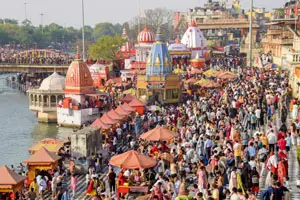Vaisakhi, Satyagrah & Reviving the Saga of the Street

Eleven minutes. Merely 11 minutes filled the annals of history with the screams of those Punjabis who had come in their neatest clothes and festive spirits to a barren ground in Amritsar on the happy occasion of Baisakhi, a little over a hundred years ago. Most of them did not go back home that day. Chroniclers of history and scribes of war & peace, say they feel goosebumps every time they read accounts of eye witnesses of the Jallianwala Bagh massacre, where on the command of a British general, an open fire left our people scrambling down a well and up a wall, only to die a bloody death for no fault of theirs. The incident scripted a collective memory of helplessness coupled with the rage to fight back for our civil rights.It was this incident that sparked Gandhi’s satyagrah against the Anarchical and Revolutionary Crimes Act of 1919, popularly known as the Rowlatt Act.
The cities of Punjab participated with great vigour and discipline in this movement that united Hindus, Muslims, Sikhs and Christians into one unified India that had come together to identify the cause of their suffering and to address the consequences that arose from it, to prove to the regime that there is nothing quite like human misery to foster bonds of brotherhood. Satyagrah or truth force was a movement that arose on the streets and remained on it. Our festivals, our freedoms, our fraternities of brotherhood that the street symbolises, was what that particular Vaisakhi awakened us towards.
On this day, 325 years ago, Guru Gobind Singhgathered followers of a radically inclusive and equitable movement that Baba Nanak envisioned and enabled in this world.They converged at Anandpur Sahib during a time when many minorities were defending their freedoms of faith, Guru Gobind Singh’s disciples sought a more robust cohesion, a shared identity that unified, strengthened, and preserved their movement. Against the backdrop of a ruthless Mughal rule, the community realised the need for promoting brotherhood and inclusivity. Guru Gobind Singh responded to this call for unity by formally establishing the Khalsa as the global united community of committed Sikhs. As I look back, I appreciate the modernity, the timelessness of such a concept and what it would have meant to India and its society even back then. The PanjPyare (five beloved ones) stepped forth as the first initiates of this newly formalized movement for liberation, fought against oppression as the Khalsa renounces all lineages of caste, creed, country, occupation, religious affiliations and gods as it establishes a new theory of brotherhood and peaceful coexistence.
This is where the role of the street, the role of spaces that are free and inclusive, becomes key. From Ram Manohar Lohia who once famously said that streets cannot fall silent to Bob Dylan who made lyric aboutthe thoughts that pavements inspire in the youthto Henna Arendt who wrote about the power that lies on the streets with the common man, I feel it is up to our youth to come forward and hit the streets with hope in their hearts, to peacefully & gracefully take up causes that affect them, their nation & society.
In an independent nation whose destiny is in its own hands, what better way to hit the streets than ‘hit the streets running!’. We at the Sun Foundation, have been cultivating an annual practice of organising a fun run at Lutyens’ roundabouts in and around Connaught Place, serenading British urban planning with a burst of yellow and orange turbans, with a show of gatka or the traditional martial arts of the Sikhs that once symbolised self-defence in the era of the Mughals and became intrinsic to a culture,amid the beating of those big dholsthat turn the tick-tock of clocks into something of great cheer. Last year as well as this year,the legend who flags off the race is Fauja Singh – who has witnessed the passage of a century, that marked a shift in scales from our helplessness and fear to a day and age when we are free to steer our destinies in the directions we desire.
The cause we are making young Indians run for is that of a drug free society. With a turnover of around $500 billion, drug addiction is the third-largest business in the world and according to National Crime Records Bureau data 2023, Punjab recorded the highest number of 144 drug overdose deaths in the country last year along with 90 recorded deaths due to spurious liquor. It is a frightening culture that has implications on our social, economic fabric along with serious public health consequences. The essence of baptism by Amrit was Guru Gobind Singh ji’s vision of shunning smoking, drugs and the debauchery of ‘nasha’ from people’s lives. This run on the streets will turn this slow and steady back-end fight against drugs into a spectre for the public eye,that will create new memories of collective possibilities.
From Jallianwala Bagh to this day in history, every year that we do live will have one Vaisakhi of its own kind and in the spirit of the Khalsa Panth, it will remind us of what showing up together on the streets for each other can come to mean.

